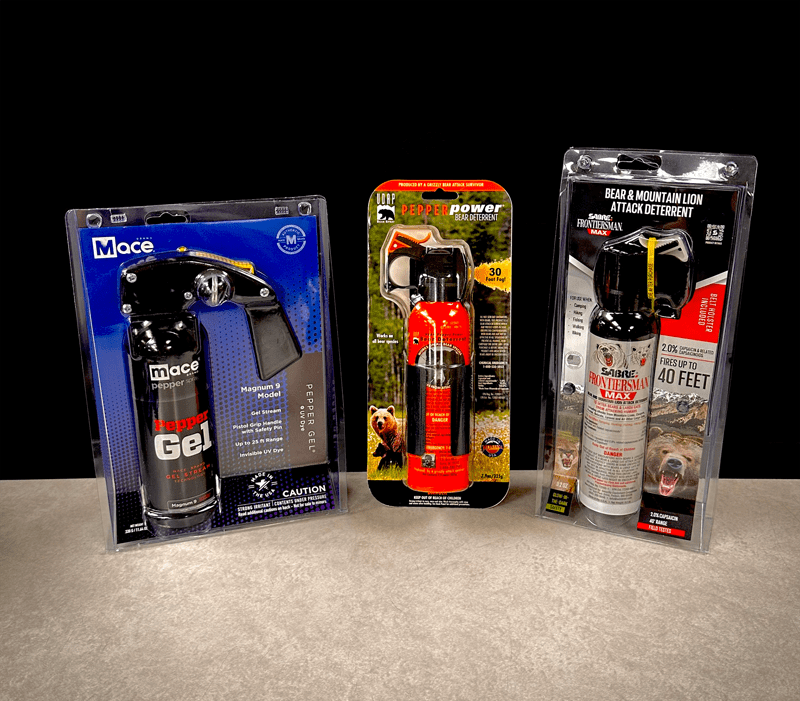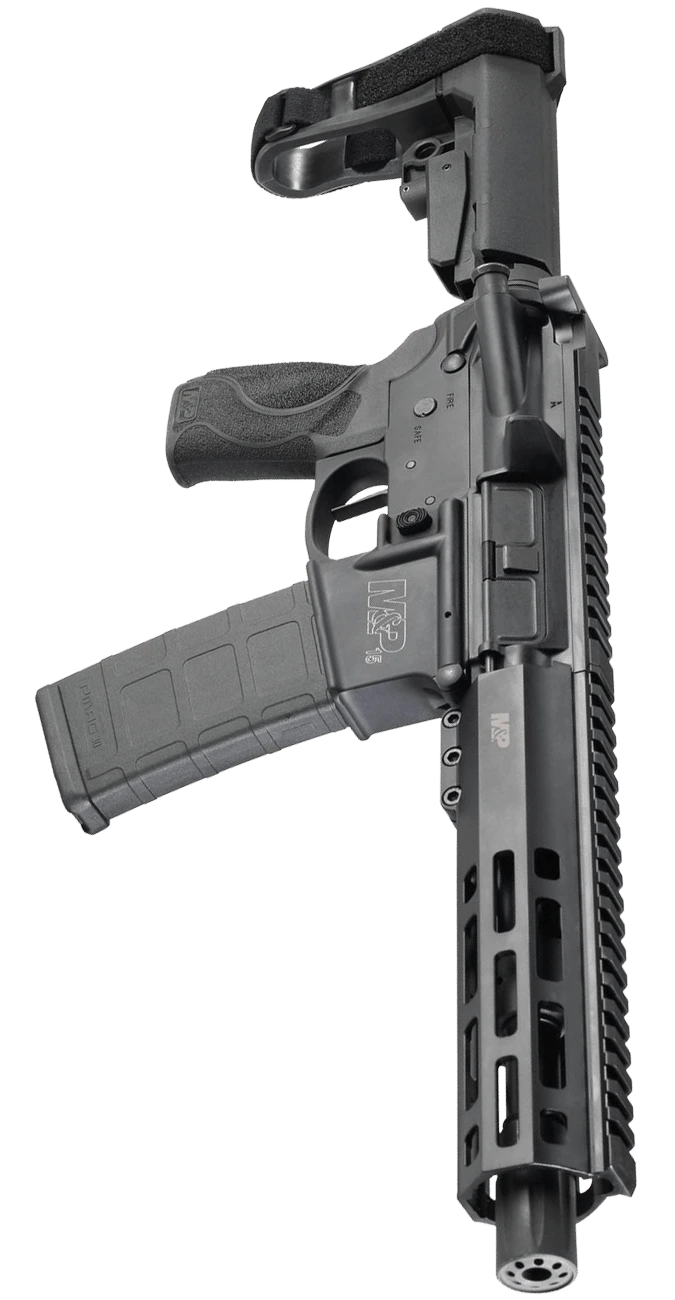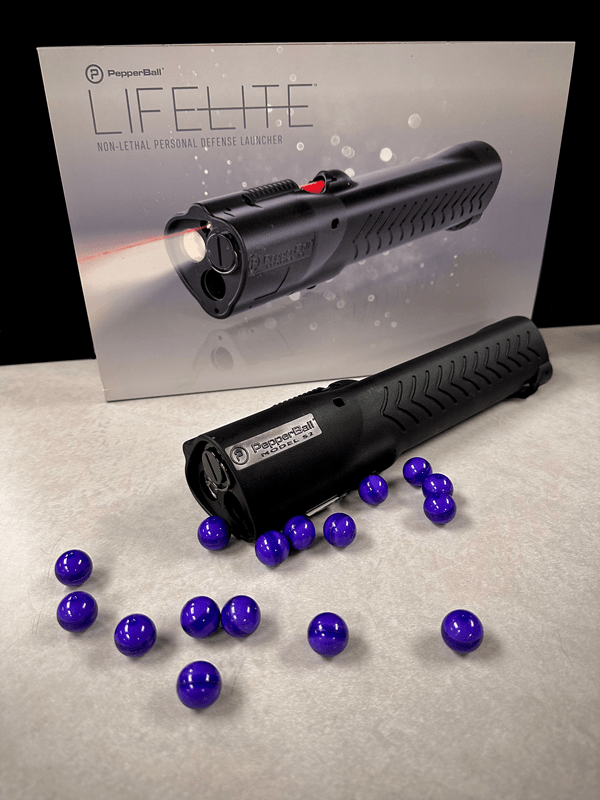Less Lethal Guns and Other Self Defense Options

Self defense doesn’t have to be deadly. There are plenty of ways to de-escalate a situation and defend yourself with things that do not result in the loss of life. Resorting to deadly force should be a last ditch effort, and you should definitely carry a gun in case you find yourself in that kind of unfortunate situation.
However, there may be times or places where you are not able to carry a gun or use one for self defense. In those instances, one of the many less lethal products on the market would be a good thing to have on hand.

Pepper Spray and Mace
By far, the most common less lethal weapon on the market is pepper spray. Often, people use the terms “pepper spray” and “mace” interchangeably, but they’re actually two different things. For starters, mace is a chemical irritant that operates similar to tear gas. It has been proven to be ineffective when used against assailants who were under the influence of drugs and/or alcohol.
On the other hand, pepper spray is an inflammatory agent that causes instantaneous inflammation that impacts the eyes and skin and is not counteracted by drugs or alcohol. This inflammatory response leads to difficulty breathing, intense pain, temporary blindness, nausea, and sometimes even vomiting. While incredibly unpleasant for the person on the receiving end, it is not lethal.
Traditional mace dates to the 1960s and it has been withdrawn from the market. The term continues to be used interchangeably with pepper spray because Mace (notice the capital M) is also a brand name that sells pepper spray.
Pepper spray comes in all shapes and sizes. There are small ones that can fit on a keychain or in your pocket; there are large ones that are designed to be worn on your belt when in dangerous places or in the presence of dangerous animals (not to kick up the “man vs bear” thing again); there are also ones designed to blend in and look like lipstick tubes - just don’t mix them up!

Stun Guns
Electricity is an effective, less lethal deterrent. Yes, people can die from being electrocuted, but that’s because they’re coming into contact with a level of electricity that was not meant for human contact. Stun guns, on the other hand, are not lethal at all because they administer an electric shock that is high voltage and low current.
A stun gun is designed for close contact situations where you are within touching distance of a dangerous person. Unlike a Taser, which can shoot electric prongs into someone, a stun gun requires you to actually touch the person with it in order for the electric shock to be administered.
The shock is strong and painful, but it is not long-lasting. You can use a stun gun to, well, stun your assailant and buy some time to put some distance between you and the dangerous person.
Like pepper spray, stun guns come in a wide variety of shapes and sizes for all sorts of applications. There are traditional ones, compact ones, key fob ones, and even combo ones that put a flashlight and stun gun together in one unit.
Rubber Bullets
The use of rubber bullets can be a very effective way to deter and/or disable an assailant without actually killing them. First and foremost, though, it’s important for you as the user to always know what type of ammunition is loaded in your gun. Thinking you’re loaded up with rubber bullets when you actually have regular ammunition can have fatal consequences. That’s why many guns that are used for rubber bullets have brightly colored furniture on them or they’ve been painted a different color to ensure that these guns are only for use with less lethal ammo like rubber bullets.
With that out of the way, let’s talk about the different types on the market. The first kind are loaded with more traditional shot found in shotgun shells, which can be anything from two large rubber balls to 15 smaller rubber balls. There are also ones loaded with rubber slugs and even ones that have chemical irritants inside of the rubber projectiles.

Less Lethal Guns
The term “less lethal gun” might sound like an oxymoron, but it isn’t. It’s also different from a gun that fires rubber bullets like the ones mentioned above. A perfect example is the Byrna SD Less Lethal Gun, which is not capable of being loaded with or firing traditional ammunition of any kind.

Utilizing compressed air (CO2) cartridges, the Byrna SD looks, feels, and operates very similarly to a regular handgun. However, this less lethal gun fires .68 caliber round kinetic or chemical irritant projectiles that are capable of incapacitating a threat from up to 50 feet away for up to 30 minutes, making it a highly effective and non-lethal self-defense weapon.
This particular gun has an ambidextrous safety, a trigger pull weight of just 6-8 pounds, and even has a picatinny rail for mounting a light and/or laser if you want to do so. The rounds it fires are loaded into a five-round magazine that fits into the grip just like a regular semi-automatic handgun. The 8-gram CO2 cartridges are designed to puncture automatically when you pull the trigger the first time, ensuring that the gun is always ready to go when you need it most. Plus, extra cartridges can easily be purchased online or at sporting goods stores.
The most powerful Less Lethal Gun option is the Byrna Mission 4 AR-Style Launcher. Effective at a range of 175 feet, the Mission 4 can reach 3 times as far as any other option we've tested. The CO2 cartridge is housed in the buttstock, allowing more CO2 capacity with increased volume. The 2 19-Round Magazines can be coupled together, allowing a total capacity of 38 rounds. That's plenty of power and capacity to stop any non-life threatening attackers.

Batons
A collapsible baton is easily concealed and can be instantly deployed. They can be kept in a pocket or a holster/pouch on the belt. With a quick flick of the wrist, the sections extend and you have a rigid yet lightweight defensive baton at the ready. A baton is a good way to keep someone at arm’s length and can deal painful blows should the need arise.
Know the Law
With all of the items mentioned above, it’s important to understand that some or all of them may not be legal where you live. You must consult your state and local laws before engaging in the use of any of these products.




